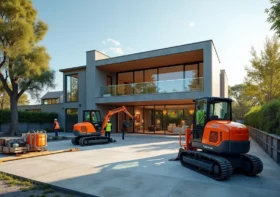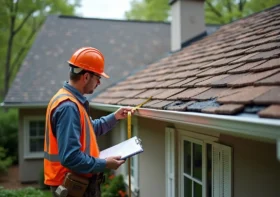Tree Cabling vs. Tree Removal: How to Save Your Landscape and Your Budget

In the realm of landscape management, you may often find yourself at a crossroads when dealing with aging or damaged trees. The decision between cabling and removal is not only critical for the health of your landscape but also pivotal for your financial planning. Learn more here https://tupelotree.com/tree-service-fulton-ms/.
This article will guide you through the advantages of tree cabling over outright removal, offering insights into how this choice can enhance the longevity of your trees while optimizing your budget.
Contents
Understanding Tree Cabling: A Cost-Effective Alternative
What is Tree Cabling?
Tree cabling is a technique utilized by arborists to support and stabilize trees with structural weaknesses. By installing flexible steel cables and bracing rods, this method helps redistribute structural stress, preventing branches from splitting or failing. This approach is particularly beneficial for mature trees, which may have developed weak branch unions over time.
Benefits of Tree Cabling
Engaging in tree cabling offers a cost-effective way to preserve your trees while maintaining the integrity of your landscape. Unlike tree removal, which can be expensive and dramatically alter your property, cabling is less intrusive and allows trees to continue providing shade and beauty. Additionally, cabling can extend the lifespan of your trees, protecting your investment and fostering ecological health.
Why Choose Cabling Over Removal?
Opting for tree cabling over removal not only saves money but also supports environmental sustainability by preserving mature trees. This choice is ideal for homeowners who value their trees’ aesthetic and ecological contributions. Moreover, by securing weak branches before they pose a hazard, cabling reduces potential liability and safety concerns on your property.
The Benefits of Tree Cabling vs. Tree Removal
Preservation of Natural Beauty
Tree cabling offers a significant advantage in preserving the natural beauty of your landscape. By providing structural support to weakened limbs, cabling can extend the life of trees that might otherwise be deemed hazardous. This proactive approach allows you to maintain the aesthetic charm of mature trees, enhancing the visual appeal of your property without the drastic measure of removal.
Cost-Effectiveness
Opting for tree cabling over removal can be a more cost-effective solution. Tree removal involves extensive labor, equipment, and potential landscape restoration costs, which can quickly add up. In contrast, cabling is a relatively straightforward procedure that reinforces tree integrity, often at a fraction of the cost.
Environmental Considerations
Beyond aesthetics and cost, tree cabling supports environmental sustainability. Trees play a crucial role in carbon sequestration and provide habitats for various species. By choosing to cable rather than remove, you contribute to preserving the ecosystem, promoting biodiversity, and reducing your carbon footprint.
Budget-Friendly Tree Care: Choosing Between Cabling and Removal
Assessing the Costs
When considering tree cabling versus tree removal, cost is often a primary concern. Cabling, the process of installing flexible steel strands to support a tree, is typically more budget-friendly. It extends a tree’s life, allowing for gradual growth without the immediate expense of removal. On the other hand, tree removal can be significantly more costly, especially for large or hazardous trees, as it involves specialized equipment and skilled labor.
Evaluating Long-Term Benefits
Beyond immediate costs, consider the long-term benefits. Cabling supports a tree’s health, preventing potential hazards and preserving aesthetic value, essential factors for property value. Tree removal, while more expensive, might be necessary for severely damaged or diseased trees, ultimately saving on future maintenance costs.
Expert Tips for Deciding Between Tree Cabling and Tree Removal
Evaluate the Tree’s Health
Before making any decisions, it’s crucial to assess the health of your tree. A healthy tree with minor structural issues may benefit from tree cabling, which supports weak branches and prevents breakage. However, if a tree is diseased or dying, removal may be the safer and more cost-effective choice to avoid potential hazards.
Consider the Tree’s Location
The location of your tree can significantly influence your decision. Trees situated near homes, power lines, or other structures may pose a risk if left unstable. In such cases, tree removal might be necessary to ensure safety. Conversely, a tree in a more isolated area might be suitable for cabling.
Consult a Certified Arborist
Always seek the advice of a certified arborist, such as Tree Service Fulton solutions. Their expertise can provide invaluable insights into whether cabling or removal is the best option for your specific situation. They can assess risks and recommend solutions tailored to your landscape’s unique needs.
Final Thoughts
In weighing tree cabling against tree removal, you not only protect your landscape’s aesthetic value but also make a prudent financial decision. By opting for cabling, you preserve the natural beauty and ecological benefits of your trees, while potentially extending their lifespan. This approach also often proves more economical than removal, allowing you to allocate resources to other landscaping needs. Learn more here: https://tupelotree.com/tree-service-fulton-ms/.



